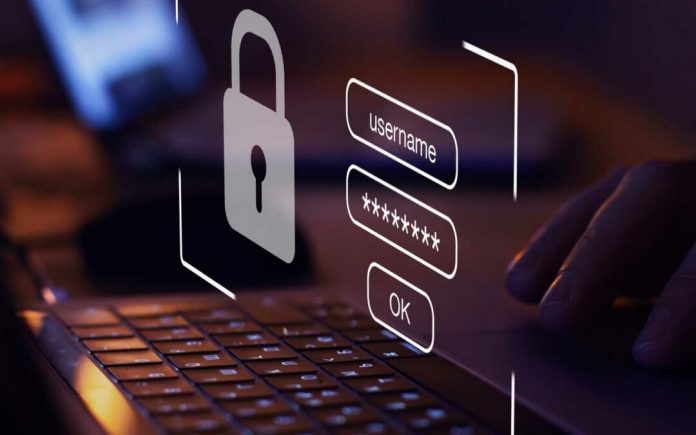In today’s online world, when a business wants to enter and penetrate its market rapidly and efficiently, building up a strong web presence is the way to go. A representative website and social media accounts on Facebook, Twitter, Instagram, and Pinterest can help entrepreneurs achieve this goal quickly but efficiently.
With the rapid growth of these channels’ popularity over recent years, thanks to their ease of use and accessibility from any location with an internet connection, more and more people are getting onto the bandwagon every day.
Business websites get cloned, Facebook pages get hacked or imitated, tweets sent out with no author behind them, and there seems to be no end to it.
To protect businesses, brands, and trademarks against this kind of attack, it is necessary to use brand impersonation protection software and create a strategy that will focus on detection and enforcement through different methods such as education, technological advancements, and community involvement.
This article will present tools to help entrepreneurs in their business impersonation protection by providing them with the most efficient procedures for reporting fake Facebook business pages, Instagram accounts set up under their name, Twitter profiles trying to represent them, or any other domain spoofing website.
Once these malicious entities are reported, they will be taken down swiftly thanks to the cooperation between platforms carrying out “Digital Millennium Copyright Act” (DMCA) requests. By reading this guide, you will learn how important it is that companies join forces and end such fraudulent activities.
What is Impersonation?
The definition of “impersonation” varies depending on the context. It can be generally defined as a false representation of someone’s identity to obtain something from others or cause some harm.
For example, people use fake names when entering competitions to get prizes for themselves instead of the actual prize receiver or cybercriminals setting up fake Facebook business pages that will help them gain personal information or financial profit.
Let’s take a closer look at some other ways businesses are impersonated on social media websites:
The Impact of Impersonation on Brands
Impersonating a company online represents one of the significant problems for companies nowadays. Once an impersonator has stolen a company’s trademark, the company might lose customers and suffer financial harm because of the revenue lost on counterfeit goods or unauthorized promotions that will not benefit their brand in any way.
At the same time, counterfeiting also puts consumers at risk as they are exposed to substandard products, which can be harmful to their health. This means that both direct and indirect damages related to business impersonation must be considered when browsing online marketplaces.
Impersonation Attack Examples
Now let’s look at some examples of how businesses are being hacked or imitated on various social media platforms to get something out of it. These fraudulent activities are widespread nowadays and are targeting more businesses.
Domain Spoofing
One of the most effective ways to represent a company online is through a website designed with branding elements such as color, logos, icons, and fonts. This way, it will be pretty hard to determine if the website is not official because it will appear as if the content was published on that site.
On top of that, this method enables cybercriminals to easily acquire personal information from their victims who want to purchase their products or services.
For example, Domino’s Pizza has been impersonated for several years since 2010 when an unknown party bought their domain (www.DominosPizza.com). Since the purchase, the original website has been redirected to a fake site, making visitors believe they were browsing through the official Domino’s Pizza page.
Cybersquatting: One of the most common types of domain spoofing is cybersquatting, also known as typosquatting. In this case, cybercriminals will try to profit from a company’s reputation by buying their trademarked domain and redirecting it to another fake website pretending that it belongs to them or their brands.
To do so successfully, they need to register a domain that can be hard since companies often protect their trademarks, especially when thinking about big players such as Facebook, Twitter, or even Burger King.
Typosquatting: The type of cybersquatting called typosquatting is all about stealing traffic from search engines by registering a domain very similar to an already existing one.
This method applies when people often misspell words when typing URLs in the search bar, and cybercriminals are fully aware of it, so they register fake domains, which will lead them straight to counterfeit websites where users might enter their personal information unknowingly.
For instance, many people can be tricked into thinking they are on the official Disney website since they might type https://disneymoviesanywhere.com instead of https://disneymoviesanywae.com when searching for a site to watch their favorite Disney movies.
Fake Social Media Accounts
Another intelligent way cybercriminals imitate a company online is by setting up fake social media accounts under its name. In this case, they will try to gather followers and then start using the account for their benefit, such as posting links from malware-infected websites or promoting illegal products without the brand owner’s knowledge.
In one of the most famous cases, an impersonator has set up a Facebook page for Burger King and started sharing posts and memes about cats instead of posts related to food meant to be shared on the authentic restaurant’s Facebook page. As you can see, it is more than easy to deceive people on social media, and cybercriminals know it.
Fake Mobile Applications
Lastly, we have mobile applications in this category of fake businesses online. According to a study, nowadays, about 1.4 billion apps are available in the Google Play Store alone, making it super easy for cybercriminals to create an app that resembles another one without anyone noticing.
They are usually offered free to make things worse, so users will download them faster without realizing they are being tricked. For instance, when you want to download the GrubHub delivery service application on your phone, be careful since many spoofed apps look exactly like this official one, but their name is not what they claim.
What To Do For Brand Impersonation Protection?
So, what to do for brand impersonation protection? First of all, if you have a website that can be easily accessed via URLs, make sure to register your domain name so nobody else will be able to use it.
If possible, use the HTTPS protocol to protect data transfers and always check the SSL certificate before entering any personal information on the website. The two golden rules here are:
- Look for the green padlock symbol.
- Keep an eye out for https://domainname in the URL address bar instead of just http://domainname. This will get double protection since such websites usually display a “secure” sign next to their URL.
According to the OWASP foundation, SSL certificates are crucial to have a secure website since cybercriminals often use fake protocols that look very similar to HTTPS but lack what makes it secure.
Also, you can check if any of your official social media accounts get compromised by using Google alerts which will notify you via email when something wrong happens with your brand online.
The same applies to mobile applications, so having an alert set up on Google Play Store is advised whenever new apps are added or even changed.
Last but not least, if the company cannot afford to have an expert do it for them, they should at least make sure their employees and web admins know all possible ways of detecting and preventing impersonation schemes. Even though this option is not the cheapest, it is still better than having your company’s good name ruined by cybercriminals.
Conclusion
To protect your business from impersonation attacks, it is crucial to understand these attacks and how they can impact your brand. Implementing a comprehensive security plan that includes detection and enforcement mechanisms is the best way to protect your company from becoming the next victim of an impersonation attack.



































